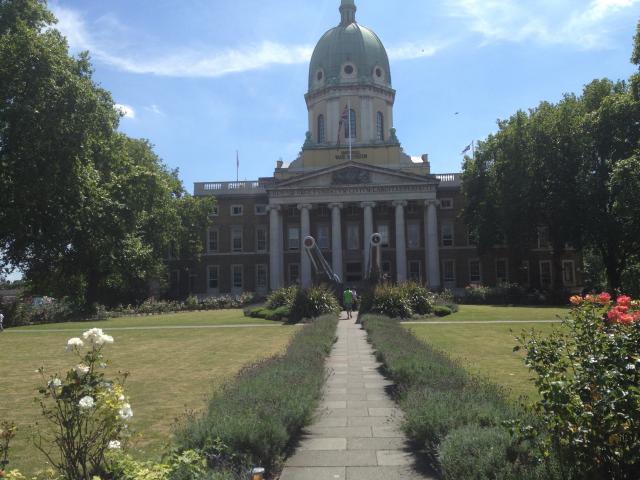
The Imperial War Museums (IWM) flagship location in London has spent the last year undergoing a transformation in anticipation of the centenary of the First World War (WWI). This past weekend, the transformed museum reopened to the public for the first time, featuring a major redevelopment of their Atrium, designed by Foster + Partners, two new art exhibitions as well as their brand new, highly anticipated, First World War Galleries. While in London, Larry Heath had the opportunity to preview the museum’s updated space.
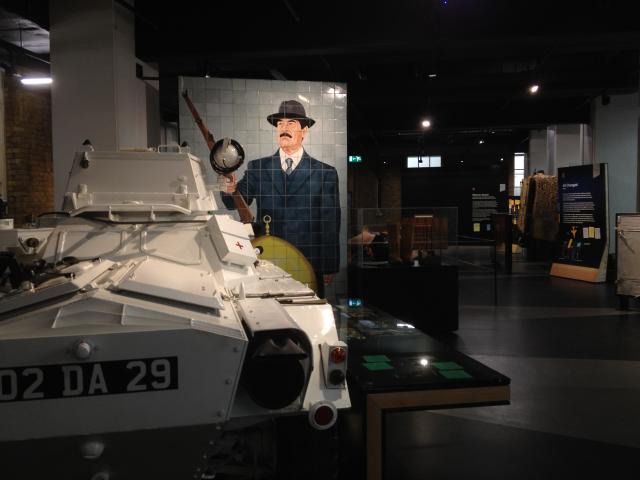
The Atrium
As you start to go through this article, you’ll see references to objects in their thousands. Indeed, this Museum contains an impressive array of artifacts of war throughout its five floors and many rooms. But when you enter the museum space, you are now greeted by just a few objects in particular – massive items that serve the space from ground and air, reminiscent of the Air & Space Smithsonian in Washington DC – albeit to a smaller scale.
Originally scattered throughout the venue, one of their main objectives of the Atrium was to give the objects – from weaponry of warfare to the vehicles meant to save and protect – sense and meaning. As you descend up the stairs you’re able to get a closer view of the objects which hang over the ground floor, from German revenge weapons to British aircraft, in areas themselves littered with new exhibitions.
Here, you’ll come across a series of spaces (Witnesses to War, Turning Points: 1939-1945, Peace and Security: 1945-2014 and Curiosities of War) that help tell the story of war beyond the First, taking us all the way to the wars of today, from remnants of Nazi occupied Europe, to a piece of the twisted wreckage of the World Trade Centre and a painting of Suddam Hussein from the streets of Iraq.
Then there’s the items that serve as a reminder of the constant battles that we don’t talk about, and how war torn regions are where Western society harvest the materials that make the parts that fuel things like our video game consoles. The objects are designed to ignite discussion across age ranges and keep the Museum in a contemporary context – connecting the battle ships of 100 years ago to the wars that wage today, and the price that human beings around the world continue to pay.

The New First World War Galleries
Though the atrium welcomes you to the Museum and starts the discussion, it’s in the new First World War Gallery, located on “level zero”, that IWM wants you to spend your time. Curving its way around the building, the gallery sits with a modern edge, using touchscreen and interactive projection technology to enhance the experience for guests young and old. Moving beyond the display of the memories of war, the IWS wants to fully embrace the guest in the experience of war – the sights, the sounds and the words. Every piece and every sentence written is taken directly from between 1914 and 1918, rather than from the historians who look back on the period. It’s the experiences of the people who lived the war and the pieces that have survived the century.
With some 1300 objects, from large weapons to letters and diaries, accumulating in the gallery, this is an exhibition intended to encourage discussion for years to come, and the modern technologies embraced will cement its place as one of the finest War exhibitions in the world. Especially over the next four years, looking on 100 years from the War, this will be a must see attraction in London; connecting us to an event that very, very few living still remember. It’s through exhibits like this that the memories will not be forgotten by the rest of us, with, naturally, the hope that history will not repeat itself. Though as we write this, these hopes seem to be be, sadly, dimmer..
The keystone of the experience is an area designed to recreate the sensory experience of the trenches. With a Sopwith Camel fighter plane overhead and a Mark V tank not far behind, while silhouettes of soldiers are projected amongst the soundscape of war, the experience echos through the whole gallery and sets a reflective tone.
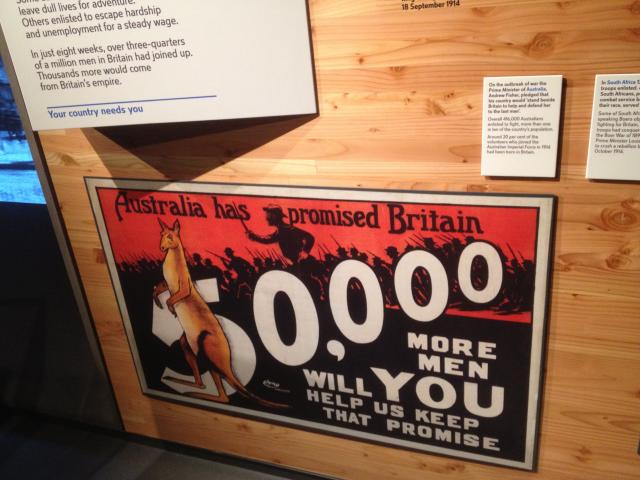
Australia’s involvement is littered throughout the permanent exhibition, not just for the WWI Gallery but also throughout the Atrium spaces. Moving upstairs, you’ll find Old Fred, one of the WWII fighter jets piloted by Australians. Meanwhile in the WWI Gallery, you’ll find items like this poster, promoting Australia’s entry into supporting the war efforts (pictured above).
With 14 “story areas” breaking down the war from start, to middle and end, the Gallery serves its purpose as a comprehensive timeline of the First World War, and shows all onlookers “why the world went to war, why it lasted so long, how the war was won (and) how is changed the world”. And this it achieves with flying colours.
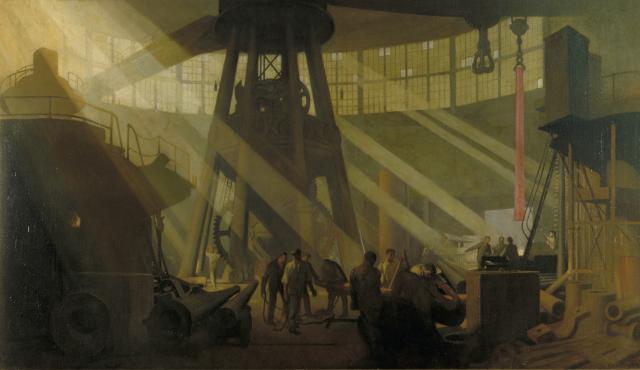
Truth and Memory: British Art of the First World War
In addition to the artifacts of war are two new galleries. The first is a debut exhibition of British art, exclusively produced during and directly following the First World War. From futurist depictions to modern portraiture, it’s an extraordinary display of war, battle, life at home and serves as a unique snapshot of the time. Some of the pieces are particularly colourful and vibrant – others dark and, as one would expect – morbid. The “Truth and Memory” gallery takes over two rooms of the Museum’s third floor and features 120 artworks. It is the largest exhibition of its kind in almost 100 years.
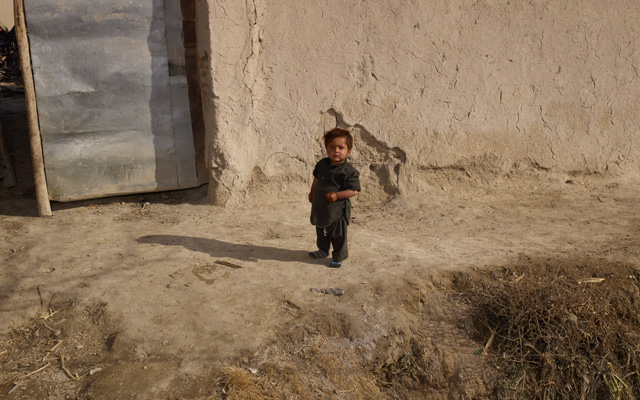
IWM Contemporary: Mark Neville
The second gallery takes things to the modern time, with video and photographs taken from the current War in Afghanistan. It’s a body of work from artist Mark Neville that was commissioned by IWM in 2010, which saw Neville spend two months with the 16 Air Assault brigade in the country as a war artist. Filming and photographing British soldiers and Afghan civilians, the small, but poignant exhibition, is a confronting yet beautiful snapshot of the toll that war takes on its people and its soldiers. Make sure you stay to watch Bolan Market as part of the series of films on rotation. A silent, 6 minute slow-motion film, showing the view of a market from an armoured vehicle, it’s a side of the region rarely seen.
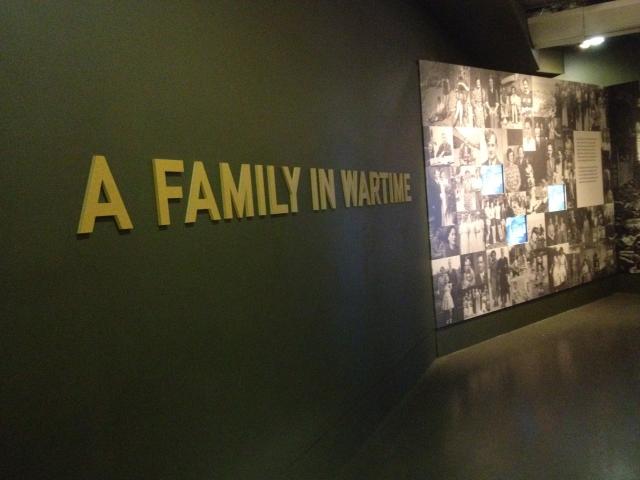
Existing Spaces
It was my first time at the gallery and so even the existing spaces were new to me. But the high standard of quality by no means dates any part of the gallery to the addition of the rest. The Holocaust, opened in 2000, is a two level feature that alone could take a full day to digest, and sits comfortably amongst some of the best Holocaust exhibits around the world, with a massive scale model of Auchwitz among its centrepieces.
There’s also A Family In Wartime, a fascinating look at the life of the Allpress family during the War. Two spy exhibitions in Secret War and, for the kids (and a small admission fee), Horrible Histories: Spies as well as The Lord Ashcroft Gallery: Extraordinary Heroes on the top level.
Definitely give yourself a full day for this Museum. There’s a lot to take in.
—————-
IWM London re-opened over the weekend, with free admission to the public.
Hours: Open daily 10pm until 6pm, with the last admission at 5.45pm.
Location: Lambeth Road, London, SE1 6HZ
More Details: http://www.iwm.org.au
